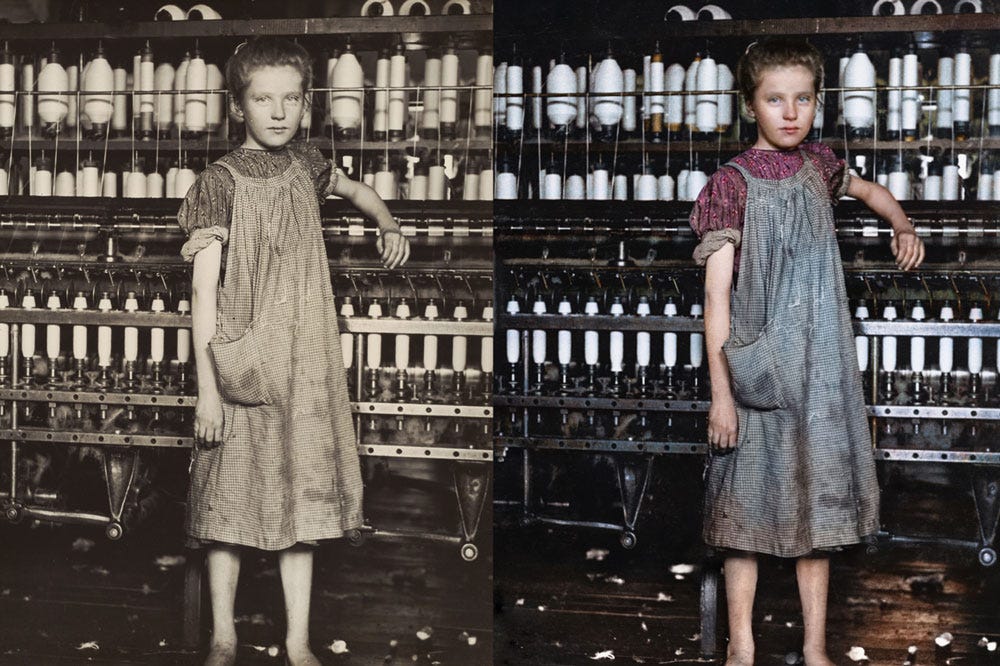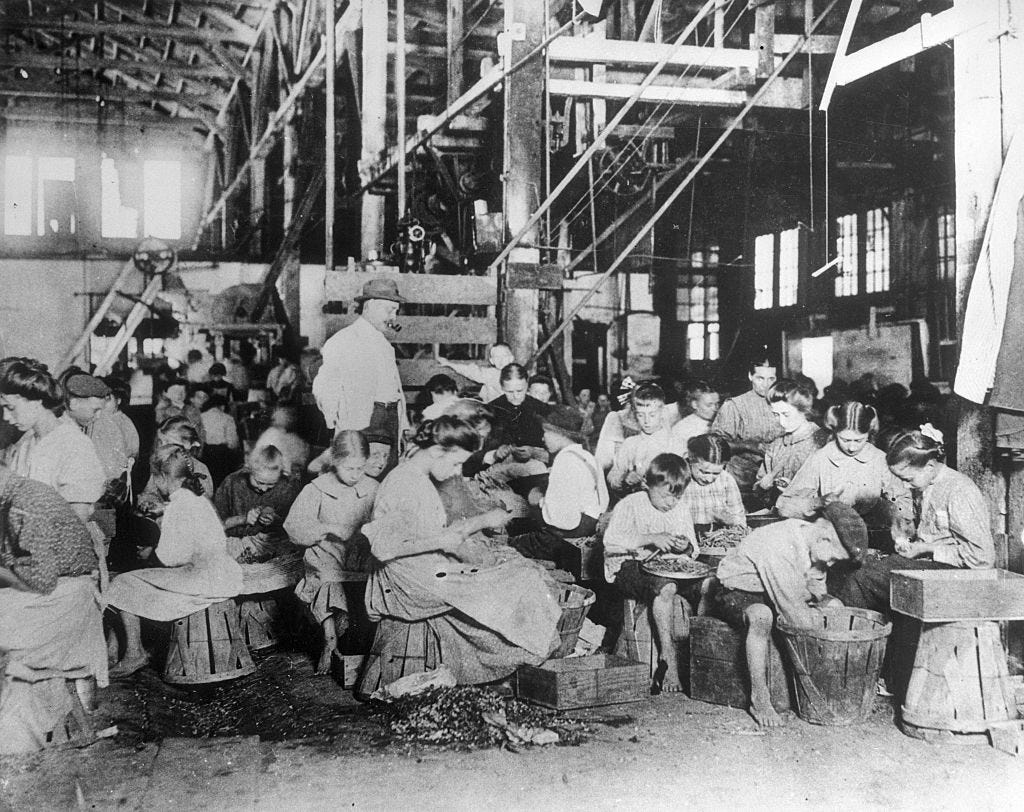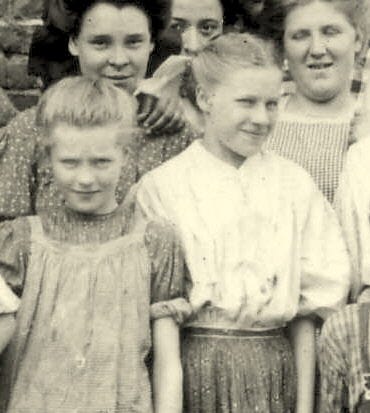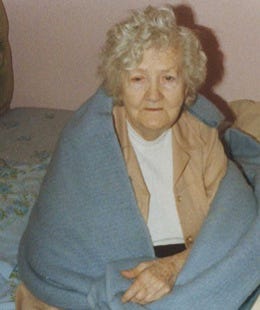I've been colorizing photos for 8 years, and over the course of my career, I've had many extraordinary opportunities to stumble upon real connections to many of the people in the photographs I've worked on (my "characters", if you will).
Imagine spending hours alone in the studio, restoring life and color to an old image, looking at a sometimes unknown face for hours on end, and then getting to talk to someone who knew that person in real life! It's an uncanny feeling, like stepping through a time portal and shaking hands with history itself.
My story with Captain Thomas H. Garahan and his son, Frank Garahan, is one of the best and most powerful examples of that.
The other way you have to step through this portal, and it's this one that happens more frequently, is actively going after more information, doing something similar to an archaeological excavation (shout out to my friend
). You immerse yourself in the subject you are working on, grab your tools and start digging, hoping to find anything that will give you a glimpse into what's beyond that image frozen in time. Sometimes, you won't find anything. In this case, you simply shrug and accept that you will never know more about that person than what the photograph is already telling you. But sometimes, luck is on your side. You find a tidbit of information here, a small fact there. Suddenly, those people are no longer just images frozen in time. They become individuals who've lived and loved, laughed and cried.These moments transform a ‘simple’ and lonely task into a magical journey. It's fascinating and utterly humbling. And it gives life to my work in a way that I never could have imagined when I first started.
The photo below, taken in 1910 by the amazing photographer (and one of my all-time favorites) Lewis Hine in Vermont, led me to one of those moments. It shows 12-year-old Addie Card; a small, innocent face, but her eyes betray a maturity beyond her years.

Lewis Hine is best known for his powerful photographs documenting the harsh realities of child labor in the United States during the early 20th century. And, by the way, I'm currently working on a collection for this newsletter, exclusive to paid subscribers, that will feature many of his images in color for the first time. If you're interested, subscribe, and stay tuned!
Addie is one of the thousands of children Hine photographed all across the U.S. (5,100 of his photos and 355 negatives were donated by the National Child Labor Committee to the Library of Congress in 1954). Given the context, it's hard not to speculate about the kind of life she must have led. When her picture was taken, she used to work long hours as a spinner at North Pownal Cotton Mill; her childhood stripped away, replaced by the hard demands of labor that no child should endure.
As usually happens, I had many unanswered questions buzzing in my mind while I looked at her. What was her life like beyond the mill? How did her story unfold? What was her favorite color, her favorite food?
Thankfully, there were others who had the same questions, and they set out on a mission to discover the answers.
The pieces of Addie's life story that we now have access to, thanks to the fantastic investigative work of Elizabeth Winthrop and Joe Manning, don't form a perfect, complete picture. There are many gaps and moments lost to the past. Yet, these fragments are rich and important, offering more insight into who Addie was beyond the girl depicted in Hine's photo.
The untold story
Addie was born in December 1897 to Emmett Card and Susan Harris. At the tender age of two, her world abruptly changed as her mother passed away. Left in the hands of a father unwilling to take care of his children, she and her sister Annie were sent to live with their grandparents, Adelaide and William Harris, in North Pownal, Vermont.
The girls can be seen together in a second photo taken by Hine on the same day:
Fast-forwarding a few years, 17-year-old Addie married Edward Hatch, in February 1915. However, joy was unfortunately short-lived: five days later, Adelaide, her grandma, suddenly died.
One of Addie's poignant stories from this time, shared by her great-granddaughter in an interview, is as compelling as it is eerie:
“She said that the day her grandmother died, she was working at the machines, and she looked up, and her grandmother waved to her from outside. She said, ‘I’ll be right there, Gramma.’ She looked down, finished what she was doing, looked up again, and her grandmother wasn’t there. She told her supervisor about it, and he said that he hadn’t noticed her grandmother there. She went home, and her grandmother was getting her last rites. She thought that, somehow, her grandmother was saying goodbye to her. That gave me goose bumps.”

On June 26, 1919, Addie gave birth to her first daughter, Ruth. The excitement and wonders of motherhood were overshadowed by a difficult birth that resulted in severe health complications for Addie, and a complex relationship with her mother-in-law made the situation even more challenging. According to her relatives, Addie was coerced into signing a document that she thought temporarily transferred Ruth's custody to her mother-in-law. Sadly, she didn't comprehend that she was actually giving up custody permanently. Eventually, Ruth was raised by her aunt Jenny Remington, with no acknowledgement of Addie and Edward as her biological parents. Addie did try to reconnect with her later in life, with no success.
Addie and Ed's relationship ended in June 1925, with her being formally accused by him of adultery. Following the troubled divorce, she moved to North Adams. There, she met her second husband, Ernie, with whom she adopted a baby daughter, Elaine, soon after getting married.
Life, however, wasn't ready to give Addie a break. With Ernie engaged in a relentless struggle with alcoholism, which saw him frequently admitted to mental institutions, she was thrust back into the laborious world of the mills.
From this point on, some details in her story are blurry or missing, but we know that she eventually relocated to New York to live with Elaine, who was now a grown woman, married and mother of two, before moving out to Cohoes in 1961.
Addie lived a long life of 94 years, passing away in 1993.
"There is a history in all men's lives."
A picture, indeed, speaks a thousand words, but there are also those words that remain unspoken, simmering beneath the surface. What dreams and desires fueled Addie's days? How did she perceive her world? How did her voice and her laughter sound? Looking at her photograph, we get a glimpse into a small part of a much larger story.
And it's not just Addie. There are so many other faces, other pieces waiting to be discovered and shared.
The beauty of this exploration lies in the never-ending surprises it holds. Just when we think we have seen it all, another photograph, another face, another story comes along to spark fresh curiosity and send us down a new path of discovery.
As I've said before, history isn't just about the big events and dates, after all. It's made up of millions of individual stories.
But what about you? What do you see when you look at Addie's photograph? Perhaps her story strikes a chord with you, triggers a memory, or makes you wonder about your own family history. I’d love to hear your thoughts, insights, and personal reflections here in the comments!







Bleak life histories of this sort are all too common -- and all too often lost. Thank you for sharing.
I’ve seen this picture of Addie at the machines and the one with her sister Annie many times because they are really family photos. Annie was my grandmother, and Addie my great aunt on my mother’s side. This is the first time, however, seeing the one of Addie in color. In black and white it’s basically a photo of a young girl - in color, it reveals the expression of a very tired young girl who worked long days with her older sister, who always tried to help and protect her throughout their lives. For those interested Annie moved to Cohoes, New York in her later teens where she was employed as a nanny. It was in Cohoes that she met and married my grandfather and together they had three daughters, my mother being the youngest. Although adult life was kinder to my grandmother than her younger sister, she passed away earlier, in her 50’s, from a stroke. I am happy to report, however, that my mother is still doing well at 97 and she will be happy to see this color photo and how you’ve brought a part of her family history to life. Thanks Marina